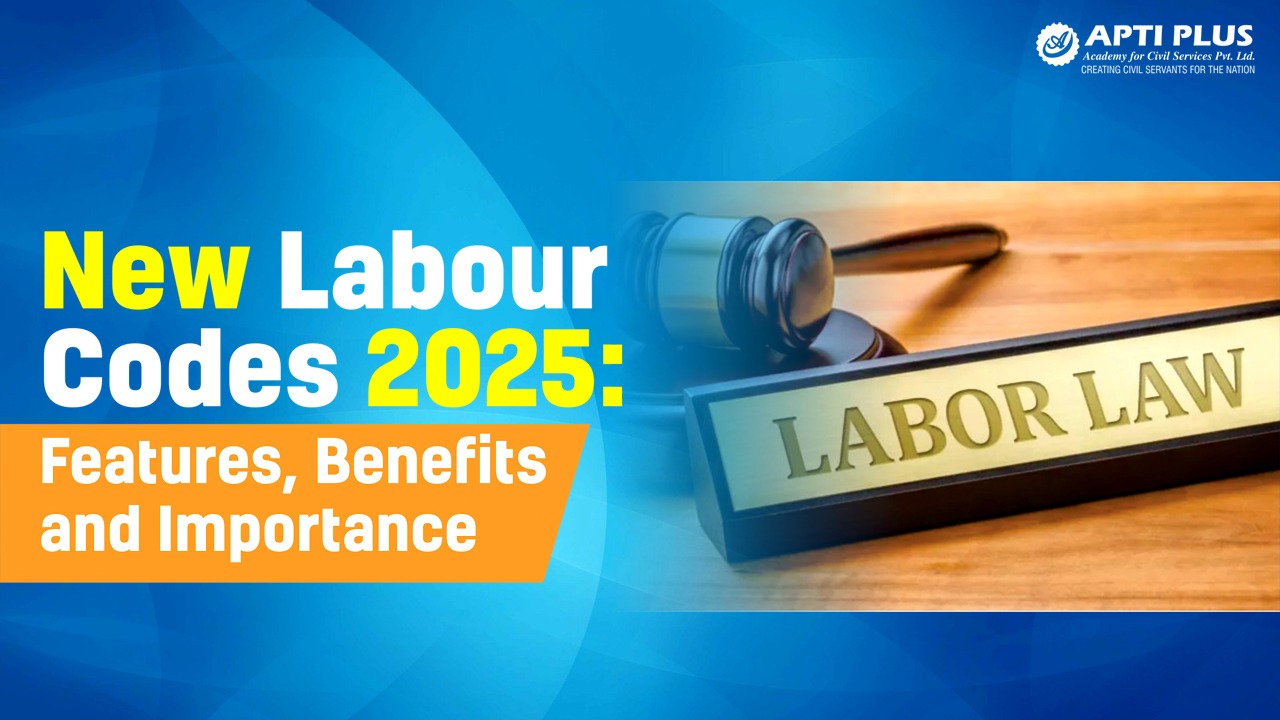




Effective November 21, 2025, India brings into force four transformative Labour Codes that replace 29 central labour laws. These reforms mark one of the biggest overhauls in India’s labour ecosystem, aiming to simplify compliance, expand social security, ensure uniform wages, and modernise industrial
relations.
The four new laws—Code on Wages, Code on Social Security, Industrial Relations Code, and the Occupational Safety, Health and Working Conditions (OSH) Code—are designed to make labour regulation simpler, faster, fairer, and aligned with the needs of a modern economy.
For decades, India’s labour laws were criticised for being:
The Labour Codes 2025 attempt to create a unified, simple, transparent, and worker-friendly system.

Uniform Wages and Remuneration Across India
The Code on Wages merges four previous wage-related laws and creates a single national definition of “wages”. It ensures fair pay for all, irrespective of sector or skill type, strengthening employee rights in India.
Key Changes
National Floor Wage
A National Floor Wage (NFW) becomes the baseline pay standard for all states. No state can fix minimum wages below this floor.
New Wage Structure
Wages will include:
Allowances cannot exceed 50% of total wages, automatically raising PF, gratuity, and social security contributions.
Timely Payment of Wages
Mandatory payment timelines:
Overtime Pay Rules
Overtime must be paid at twice the normal wage, and working hours cannot exceed 48 hours per week.
Flexible Working Hours
Workdays may range between 8 to 12 hours with mandatory weekly limits. This supports flexible working hours for new-age sectors like IT, services, and e-commerce.
Wage Slips Mandatory
Employers must provide electronic or physical wage slips, improving transparency.
Universal Social Security Reforms
This code merges nine social security laws and extends welfare to gig workers, platform workers, contract staff, and unorganised workers—a historic move.
Key Changes
Recognition of Gig & Platform Workers
For the first time in India’s labour law history, workers associated with apps and platforms—delivery partners, cab drivers, freelancers—get legal recognition.
Social Security Fund
A national fund for unorganised and gig workers will be created, funded by:
EPFO & ESIC Coverage Expansion
Fixed-term employees become eligible for gratuity after 1 year (earlier: 5 years for permanent staff).
This is one of the most important reforms in labour codes India.
Family Benefits Expanded
Definition of family includes parents-in-law of female employees (subject to income limits).
Inspector-cum-Facilitator System
Digital, transparent inspections replace arbitrary visits.
Modernising Hiring, Firing, and Industrial Harmony
This code merges three laws and introduces long-pending reforms in industrial relations.
Key Changes
Fixed-Term Employment (FTE)
Employers can hire workers for seasonal or short-term roles without using contractors. FTE workers will get:
Higher Threshold for Layoffs and Closure
Factories, mines, and plantations need government approval for layoffs only if they have 300+ workers (earlier: 100). Industry sees this as flexibility; unions see it as easing hire-and-fire.
Stricter Strike Rules
Workers cannot strike without:
Mass casual leave by >50% workers = strike.
Negotiating Union / Council
Helps faster dispute resolution.
Workplace Safety Regulations Strengthened
The OSH Code merges 13 laws and focuses on safety, health, transparency, and better working conditions.
Major Reforms
Single Registration, Single License
Reduces compliance burden for employers.
Boosts ease of doing business.
Higher Thresholds for Factory Licensing
Women Allowed in Night Shifts
With consent + safety measures, women can work after 7 pm in all sectors, including mines and hazardous industries.
Supports equal pay legislation and gender inclusion.
Mandatory Appointment Letters
Every employee, including casual labour, must get an official appointment letter.
Annual Health Check-Ups
Mandatory free health tests for workers aged 40+.
Safety Committees
Compulsory for:
Before vs After Labour Codes
|
Area |
Before |
After Labour Codes 2025 |
|
Employment Proof |
Appointment letters not mandatory |
Mandatory letters for all |
|
Social Security |
Gig & unorganised not covered |
Universal social security |
|
Minimum Wage |
Only for scheduled industries |
National Floor Wage applies to all |
|
Working Hours |
Inconsistent |
Uniform 48-hour week; flexible days |
|
Women in Workforce |
Night shifts restricted |
Allowed with safeguards |
|
ESIC Coverage |
Limited to notified areas |
Pan-India, even single worker in hazardous jobs |
|
Compliance |
Multiple licences & forms |
Single licence, single return |
Fixed-Term Employees
Gig & Platform Workers
Contract Labour
Women Workers
MSME Workers
Plantation Workers
Beedi & Cigar Workers
The New Labour Codes 2025 mark a decisive shift toward a modern, equitable, and simplified labour regime in India. For workers, they ensure uniform wages, social security, workplace safety, and equal rights. For employers, they bring simplified compliance, flexible hiring options, and reduced regulatory burden.
By unifying 29 old laws into four cohesive codes, India moves closer to a labour ecosystem that supports both economic growth and worker welfare, and strengthens the foundation of a futuristic, digitally enabled, and inclusive workforce.
© 2025 iasgyan. All right reserved